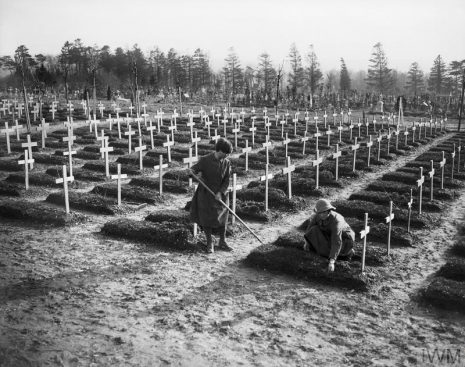Their Name Liveth for Evermore
“Men who march away” was the title of a celebrated patriotic poem of 1914, written by Thomas Hardy. Those soldiers were separated by a century from the redcoats who had fought at Waterloo, which is the same span of time between us today and the “Tommies” who fought in the Great War. But Wellington’s men are largely anonymous; the fallen of 1914-18 are not.
That is largely thanks to the labours of those a century ago who tried to ensure that the dead of the Great War ended their days in a known grave. Very different from the men who died for King and Country in 1815. Apart from the bodies of a few officers, whose wealthy families paid to be brought home, the fallen of Waterloo were piled anonymously into pits on the battlefield.
The Imperial War Graves Commission, which received its royal charter in 1917, was mainly the achievement of a man called Fabian Ware. Too old to serve in 1914, he volunteered as an ambulance driver in France and was appalled to see body parts strewn across the landscape. Ware persuaded the French government to donate land for cemeteries and the British government to fund the massive task of collecting, documenting and burying the men who would never march back.

© IWM (Q 8467) Members of the Women’s Army Auxiliary Corps (WAACs) tending the graves of fallen British soldiers in a cemetery at Abbeville, 9 February, 1918.
More than that, he ensured that each would have his own named grave and headstone, with no distinction between General and Private. Many in Britain deplored such “Prussian” uniformity, or begged for their boys to be brought home to English churchyards, but Ware stuck to his task.
After all, it fitted the tone of the times. In 1918 the Representation of the People Act finally conceded the vote to most males over the age of 21. “If a man is good enough to fight for you,” declared the former diehard Lord Carson, “he is good enough to vote for you.” This “one gun, one vote” principle also opened the door to “Tommy’s sister” who had served in factories, offices and farms on the home front – though votes for women came in two stages, 1918 and 1928. In this new democratic atmosphere, a named grave seemed the least that a grateful country could do for a man who had lost his life so that others might vote.
Ware’s project was abetted by the great and the good of postwar Britain. Edwin Lutyens, architect of the Cenotaph in Whitehall, designed many of war cemeteries including the haunting Memorial to the Missing of the Somme at Thiepval, whose 72,000 names spread across its interlocked arches. And poet Rudyard Kipling – whose only son disappeared on the battlefield of Loos – proposed for the headstone of those whose remains could not be identified the inscription “Known Unto God” – so different from the stark French “Inconnu.” It was also Kipling who suggested a phrase from the Book of Ecclesiasticus for the Stone of Remembrance in each cemetery: “Their Name Liveth for Evermore.”
Perpetuating those Names remains the mission, a century on, for what is now called the Commonwealth War Graves Commission. And Dulwich’s impressive Great War website uses the magic of 21st-century technology to bring some of those names, and their stories, to virtual life.
Professor David Reynolds OA
Author of The Long Shadow: The Great War and the 20th Century